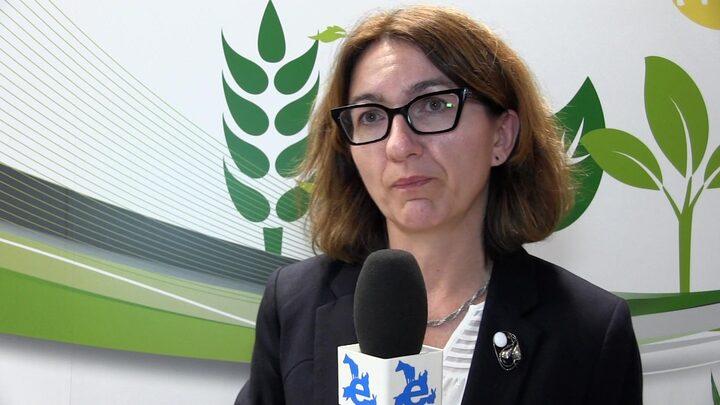Nutrition management without antibiotics


I'm not sure why the term "overfeeding of antibiotics" is used. The antibiotics have been used for their stated -and FDA approved- purpose of improving growth rates and feed conversion. It's not like the industry has been sneakily using them for nefarious purposes just to improve profits.
Park W. Waldroup,
Any description of antibiotic use in livestock has become a description of "overfeeding of antibiotics" in popular press for years now. It's concerning, though not surprising, that an industry trade site would use the phrase. Particularly since many sponsors who peddle alternatives use it as well.
No one did anything nefarious, true, but it really doesn't matter at this point. The industry has lost the argument and other groups have shaped public opinion such that any use of antibiotics by animal production is perceived to be some sort of overuse, regardless of what the laws or science or animal experts say about that use.

Park W. Waldroup Unfortunately some poultry operations using in-feed antibiotics without considering consumer sensitivity and health (antibiotic residue in carcass, etc). Though I am not personally with total ban on in-feed antibiotics, but it seems that in most countries around the globe, consumers would prefer to use antibiotic-free poultry meat and egg product in very near future. So it would be kind of market force under the public preference which will force poultry companies to restrict or totally ban antibiotic in animal feed diets (monogastrics or ruminants). Therefore, it seems that antibiotic as a growth promoter product will not have any place in modern poultry nutrition in most countries around the globe including US and poultry companies and feed industry should think on effective environment friendly-alternative to compensate for antibiotic benefits.

In addition, the antibiotics used for this purpose are not absorbed and work in the intestinal tract resulting in healthier chickens, thus accounting for the improved performance. They are NOT absorbed into the chicken's body and thus not passed on to the consumer. I may not be totally correct (but I think I am) the growth-promoting antibiotics used in the US poultry industry are not used in human medicine.

Park W. Waldroup Since 2017, drugs considered medically important by the FDA can not be used solely for growth promotion in the US. The problem with this is that bacitracin, which is used in human medicine, can be used to promote growth in animals because FDA unlike WHO does not consider it medically important. Bacitracin has recently been shown to select for bacteria that carry the mcr-1 gene that confers resistance to the drug of last resort colistin. FDA is planning to update its list shortly so bacitracin may be moved to medically important and possibly bacitracin would then require a prescription and could not be used for growth. The last part would require the makers of bacitracin to make voluntary changes to their labels to align with FDA guidance.
Steve Roach As noted above, Bacitracin is 100% Unabsorbed. In fact, FDA/CVM had quit asking for data on this point, when potentially new combinations were submitted, as it had been proven too many times before. As the EU (including WHO) has adopted the precautionary principle versus the precautionary approach, their classification is not surprising. In addition, bacitracin in humans is only used topically, and so the two applications can't really be directly compared. You should consider this article: Avian Diseases 2004 48: 317-323. In this article, it was shown that Bacitracin (and other antibiotics) can reduce bacterial resistance transfer through the pilus as they can cause a lysis in the bacterial cell wall (which includes the pilus). Evidence also exists in scientifically published articles that many of the alternatives now being used, which often also have antibacterial activity, can lead to bacterial resistance. So, the questions remains - are we really making any progress in this area from a change - especially since the AGP ban, little reduction (if any) in bacterial resistance has been reported. I think perhaps we are just fooling ourselves in an attempt to placate a largely uneducated populous.

Paul B. Tillman, Ph.D. Antimicrobial resistance can be promoted by many other factors besides the use of antimicrobials. I agree we need to go deeper with the prudent use of antimicrobials and the use of any other technology or products that also indirectly select resistance. We have to change our view and support the use of new alternative products considering also if they are or not promoting antimicrobial resistance selection, as well as we do with antibiotics. The antimicrobial resistance problem is real and it is not under discussion, at least in most of the specialized scientific community. Your comment regarding "little reduction (if any) in bacterial resistance" is not right. Limiting the use of antibiotics (a real limitation, no only the claim) reduction of resistance is observed.
Mariano Fernandez Miyakawa , Thanks for your comments! Absolutely right! Now there is strong opposition against feed antibiotics ban because a lot of firms have appropriate business. But I think so, feed probiotics are much more interesting, and gives possibility to obtain healthy, organic production. It is possible: one of my customer (2 millon.broilers) in Ukraine is producing organic broiler meat, completely without feed antibiotics! For instance, price of these meat is twice more expensive if to compare with an ordinary broiler meat. Quality is important!
Park W. Waldroup Dear Sir, I have checked it that antibiotics residues are in body of chicken. I have spread a culture of bacteria on nutrient agar plate and I removed a small piece of chicken skin and plated on the culture to see antibacterial effect of antibiotic given to chicken after 24 hrs I found zine of inhibition in test and no zone of inhibition in control. I think it proves that antibiotics can be absorbed by chicken intestine and get circulated throughout body.

Dr. Steve Blezinger Everything? I heard that the problem is the misuse of antibiotics, either in human or animal medicine (i.e. giving antibiotics to healthy animals as growth promoters or unnecessary use in human patients). I also understood that use of antibiotics (doses and timing) are related with resistance and around 70% of all antibiotics produced in the world were fed to animals. So OIE, WHO and FAO are wrong?

Hello Mariano Fernandez Miyakawa. Perhaps the word "Everything" was a bit of an exaggeration but based on ongoing reviews of the literature I as well as many others, believe that a significant amount of the problem human medicine has incurred is due to the over-prescription and mismanagement of antibiotics by human Drs and patients as well as other factors. Antibiotic feeding of food animals for therapeutic and growth promotion may be a contributor but I believe this is much more limited than many experts would like to have us believe. By placing the blame on the food animal industry this lessens the responsibility of medical Drs and human drug companies as related to this problem.

Dr. Steve Blezinger it's been some time since I saw it but there was a study many years ago where they compared antibiotic resistance in Iowa hog farmers who had been using them in their herds. they actually showed less antibiotic resistant than a general population

Does the use of antibiotics are pass in the human body through poultry? Chicken? Please suggest your opinion.
Thanks and regards,
MANOJ PATIL.

Mr. Manoj Maruti Patil. In most third world countries the practice of using antibiotics as feed grade growth promoters is not very popular. The practice here is the use of antimicrobials for the treatment of infectious conditions and there is little if any form of control in this area. This is where I feel the real scare lies.
Your personal views are respected but I have come across with certain studies that both resistance and passing over to human is true.
The discovery of Antibiotics made Livestock production easier, as it masked manage-mental mistakes on farms around the world but it is also a reality that with passage of time the recommended dosage of sub-therapeutic antibiotics increased, as in 1950s 10-20gms/Ton, in 1970s it increased to 40-50gms/Ton and today it is 30-110gms/Ton.
I think so, there are other possibilities to decrease pathogenic bacteria in the gut: proper feed enzymes, probiotics, acidifiers. Bacitracin? It is more preferable in comparing of tetracyclin or enro. Maybe, theoretically, bacitracin can cause resistance but chemical formula of bacitracine is totally different and resistance develops very slowly.

Bacteriocins from profitable bacteria (bacillus and ...), plant extracts, organic plants are control pathogen factors in the animal gut and promote its growth.
Using of antibiotics must limit by FDA & WHO in animal feeds.

With integrated broiler production system good quality chicks are being produced with minimum bacterial contamination. Breeder birds are given killed vaccines whose maternal antibodies protect the chick up to 4 weeks. The very life span of broiler has come down to a few days above a month. Feed in the form of crumps is steam steralised. water quality is taken care of. All in all out housing farm wise is taking care of batch to batch spread. Well formulated feed is producing desired growth and conversion. There is hardly a need to give antibiotic growth promoters. gut active antibiotics do not get in to muscle tissue or blood. antibiotics like terra cyclines which were used to suppress non specific bacteria are not being used. Tetraclycines have gone out of human treatment 3 decades ago.
Hence, there is hardly any possibility of humans getting antibiotic resistance to the extent the propaganda is made.
This campaign helped poultry industry to improve biosecurity at all levels and the industry is forgetting the use of these things. I think the topic can be treated as a closed chapter.
As Dr. Kotaiah mentioned with the latest breed, housing and feed mill technologies together with the strict biosecurity, the topic should be a closed chapter but in reality, there are countries that still rely on antibiotics like in the Philippines. That's why as a nutritionist I am pro nutrition management without antibiotics as growth promotant. With the latest and numerous studies on gut management with use of organic acids, essential oils, herbs and spices or plant extracts and proper use of raw materials, we had achieved to balance the microbiosystem of the gut. With the help of proper management Includes, housing, stress, vaccination, biosecurity, waste disposal and health limiting the use of antibiotics as growth promoters can be eradicated. This is true for broilers, layers and swine. We came along way of eradicating the use of the likes of fura drugs as regular medication in feeds. Just be open in other nutraceutical products available and proper nutrition.

What are the antibiotics poultry used. terra cyclones (oxy and chloro). neomycin doxycline colistine bacitracin. none of them are being used in human treatment.
Human beings stop taking complete course once they get alright with initial doses. This can cause resistance for the second treatment.
Animal products are blamed for nothing. any way good has happened. Biosecurity all over has gone up. Selection at breeder level is covering the gap may be in a years time.
Let us forget about antibiotics and strive to prevent infections. Good for everybody.


Myco 5-in-1 PLUS
Dr.Talapaneni.Kotaiah Dear Dr. Nalapaneni, sorry I do not agree with your opinion. The main groups of antibiotics are still the same in use in veterinary as well as in human medicines, for example, doxy, amoxycilline, enro... it's easy to check, you can open in internet the list of registered antibiotics in human medicine to compare it with an registered antibiotics in veterinary medicine. Active substances are practically the same.

Dr.Talapaneni.Kotaiah respectfully Doctor,
Breeding, commercial poultry farms are swarmed by Fly and Larvae* who's are indirectly depressing productivity and high Social hygiene issues*
Though many products being used literally no stopping the menace.
We have come out with a herbal extract which kills flies at its fastest, 10 minutes Max and Larvae in around 5 hours
almost permanently, but if the farmer retain and keep adding litter till a year No permanent remedy. Our product help in bio security.
Antibiotic feed supplements are sidelined by plant sources for faster, better overall performance.
Yes you are right Dr Fiodor, the same list of antibiotics are also used in human medicine but if you refused to complete the dose of antibiotic as a human patients, resistance may occur, we cannot try this in poultry because it may be disastros and may make the farmer Loo's completely.
I think clean water and organic acids, essential oils, herbs and spices is good it has to be that's why it was created its even healthy for humans

How about the use of antibiotic usage in fermentation industry and the residue left in the water? What about antibiotics used for prevention and treatment? Growth promotion is just a small piece of the puzzle?



Dhanraj we are promoting a herbal extract composition since 20 years in India.
Is a research product by a team of plant cell biology in Coimbatore agricultural University.
Based on NO secretion from the endothelial cells"
Till date No other composition could match the performance......
Natural dewormer
Enhanced gut health,
Better metabolism of feed, fodder consumed,
Enhanced productivity of better quality milk as on 3-4 days of administration*
Minimum Guaranteed Extra yield in 4 days is 1.30 lpd* with an enhanced FAT, SNF @ 20%.













.jpg&w=3840&q=75)







.jpg&w=3840&q=75)


















